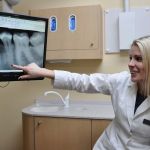Natural Treatments for Oral Thrush in Children: Safe and Effective Solutions
- 1. Understanding Oral Thrush in Children
- 2. Symptoms of Oral Thrush in Children
- 3. Natural Treatments for Oral Thrush
- 4. Preventing Oral Thrush in Children
- 5. Real-Life Case Study: Managing Oral Thrush in Children
1. Understanding Oral Thrush in Children
Oral thrush, also known as oropharyngeal candidiasis, is a common fungal infection in children caused by an overgrowth of the Candida fungus. This condition typically affects babies, toddlers, and children with weakened immune systems. The fungus naturally exists in the mouth but can grow out of control, leading to uncomfortable symptoms and the need for treatment. Natural treatments for oral thrush in children have gained popularity as safe, effective options that parents can use at home to manage and alleviate the condition.
2. Symptoms of Oral Thrush in Children
Recognizing oral thrush early is crucial for effective treatment. The common symptoms include:
- White patches on the tongue, inside the cheeks, gums, and roof of the mouth
- Painful or sore mouth and difficulty swallowing
- Redness or irritation around the mouth
- Loss of appetite or difficulty feeding in infants
- Cracking at the corners of the mouth
If you notice any of these signs in your child, it’s important to seek treatment promptly to prevent the infection from worsening or spreading.
3. Natural Treatments for Oral Thrush
While prescription antifungal medications are commonly used to treat oral thrush, many parents turn to natural remedies as complementary treatments or when seeking gentler solutions. Here are some natural treatments for oral thrush that have shown effectiveness:
- Probiotics: Probiotics, especially those containing Lactobacillus, can help restore the balance of good bacteria in the gut and mouth. Giving your child probiotic-rich foods like yogurt or fermented vegetables can help manage Candida overgrowth.
- Coconut Oil: Coconut oil is known for its antifungal properties and can be used for oil pulling. Swishing coconut oil around in the mouth can help reduce the Candida fungus.
- Apple Cider Vinegar: Diluted apple cider vinegar is another option that can be used as a mouth rinse to balance the pH levels in the mouth and inhibit fungal growth.
- Garlic: Garlic contains natural antifungal properties. You can add finely chopped or crushed garlic to your child’s meals, or dilute garlic oil and apply it gently to the affected areas in the mouth.
- Tea Tree Oil: Tea tree oil, when properly diluted, can be applied to the mouth using a cotton swab to help reduce fungal infection. However, it should be used sparingly and never swallowed.
It’s important to consult with a healthcare provider before starting any natural treatment to ensure its safety and effectiveness for your child.
4. Preventing Oral Thrush in Children
Prevention is key when it comes to oral thrush. Here are some helpful tips to reduce the risk of developing this infection:
- Maintain good oral hygiene: Ensure your child’s mouth is kept clean by wiping their gums or brushing their teeth with a soft toothbrush regularly, especially after feedings.
- Clean pacifiers and teething toys: Regularly disinfect items that come into contact with your child’s mouth to prevent bacteria buildup.
- Limit sugar intake: Excessive sugar can promote fungal growth, so try to limit sugary foods and drinks in your child’s diet.
- Breastfeeding hygiene: If you are breastfeeding, make sure to clean your nipples before and after each feed to prevent the transfer of Candida to your baby.
- Boost immune health: Ensure that your child has a healthy immune system through a balanced diet rich in vitamins, minerals, and antioxidants.
5. Real-Life Case Study: Managing Oral Thrush in Children
Consider the case of Sarah, a 6-month-old baby who developed oral thrush after a course of antibiotics for an ear infection. Sarah's mother noticed the characteristic white patches on her tongue and the discomfort Sarah experienced while feeding. After consulting with a pediatrician, they decided to use a combination of natural treatments, including probiotic yogurt and coconut oil swishing, alongside prescribed antifungal medication. Within a week, Sarah's condition significantly improved, and the oral thrush was completely resolved. This case highlights the effectiveness of combining natural remedies with conventional treatments for managing oral thrush in children.







 Warm Springs Dental4.0 (35 review)
Warm Springs Dental4.0 (35 review) Adelante Healthcare3.0 (831 review)
Adelante Healthcare3.0 (831 review) Fair Lawn Periodontics & Dental Implants4.0 (191 review)
Fair Lawn Periodontics & Dental Implants4.0 (191 review) Valley Pediatric Dentists4.0 (137 review)
Valley Pediatric Dentists4.0 (137 review) DentFirst Dental Care Cumming4.0 (434 review)
DentFirst Dental Care Cumming4.0 (434 review) Lloyd Family Dental Care4.0 (98 review)
Lloyd Family Dental Care4.0 (98 review) The Importance of Oral Health Education During Pregnancy for a Healthy Pregnancy
The Importance of Oral Health Education During Pregnancy for a Healthy Pregnancy Best Tips for Brushing Your Teeth Properly for Healthy Gums: Essential Techniques for Oral Health
Best Tips for Brushing Your Teeth Properly for Healthy Gums: Essential Techniques for Oral Health Why Skipping Dental Checkups Can Lead to Bigger Oral Health Problems
Why Skipping Dental Checkups Can Lead to Bigger Oral Health Problems Advantages of Porcelain Dental Restorations
Advantages of Porcelain Dental Restorations How Can Diabetes Cause Tooth and Gum Problems? Preventing and Managing Oral Health Issues
How Can Diabetes Cause Tooth and Gum Problems? Preventing and Managing Oral Health Issues Healthy Habits for Promoting Good Oral Health and Hygiene: Tips for a Healthy Smile
Healthy Habits for Promoting Good Oral Health and Hygiene: Tips for a Healthy Smile